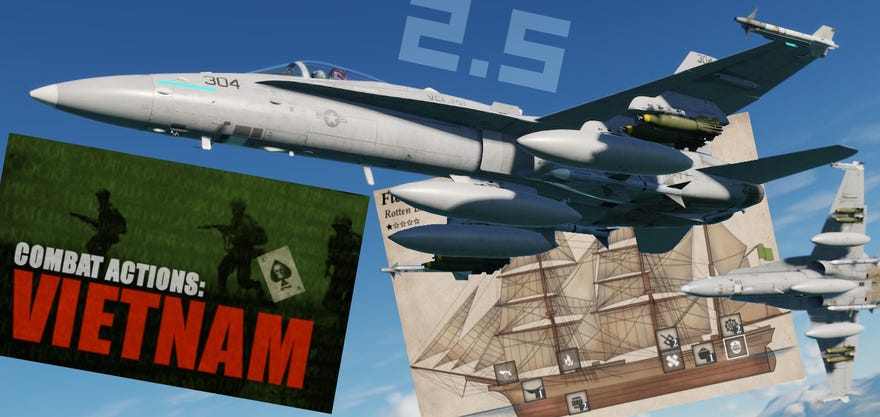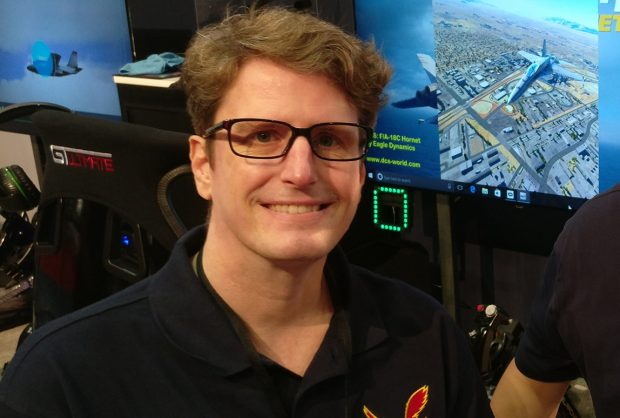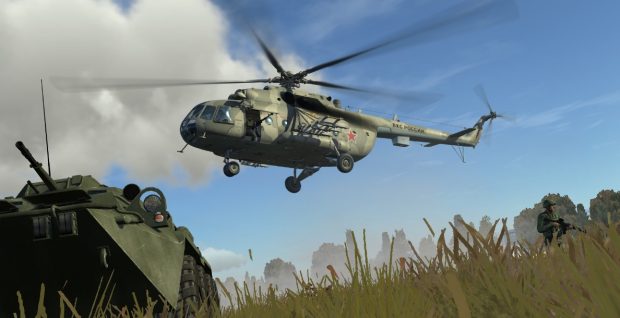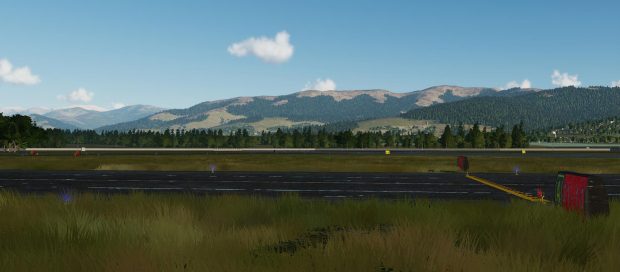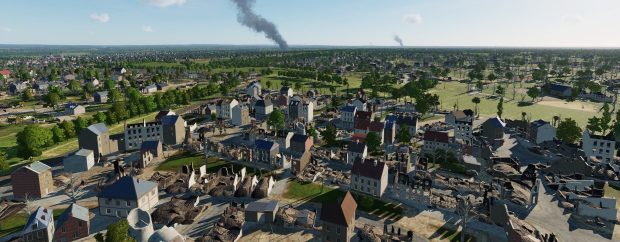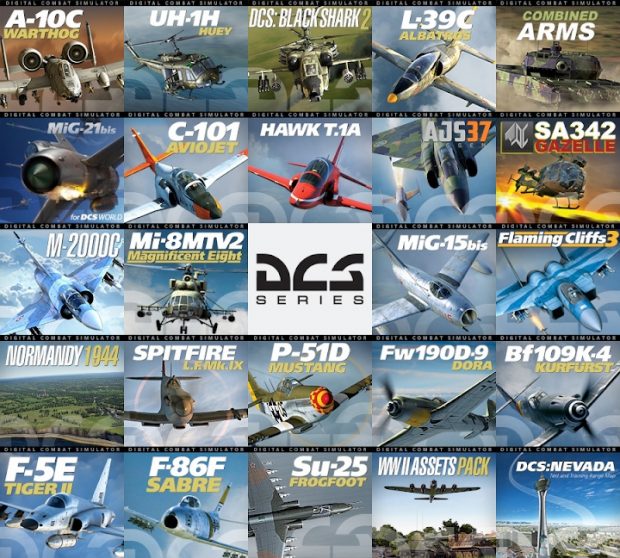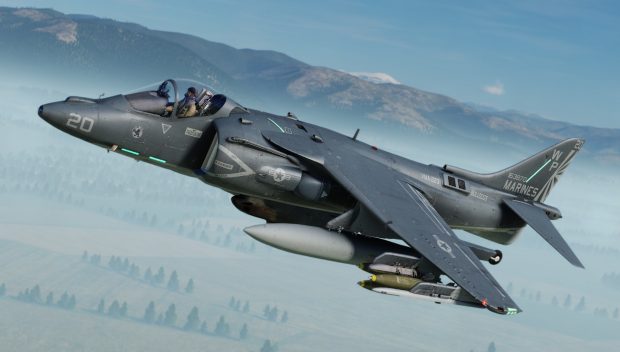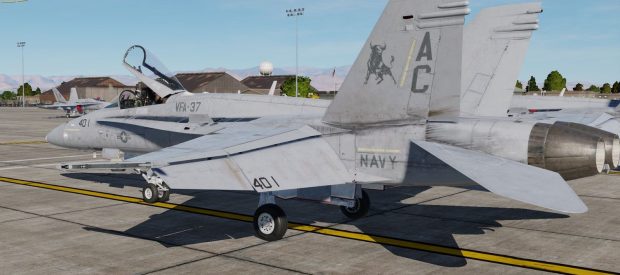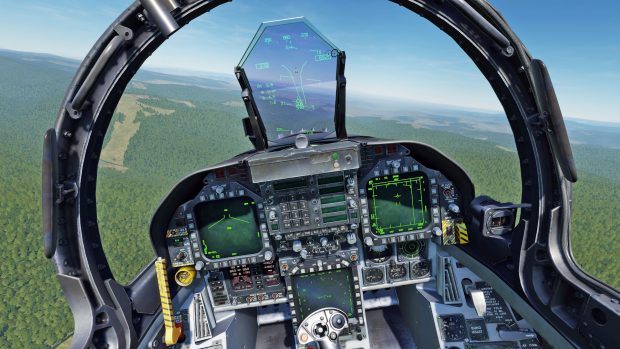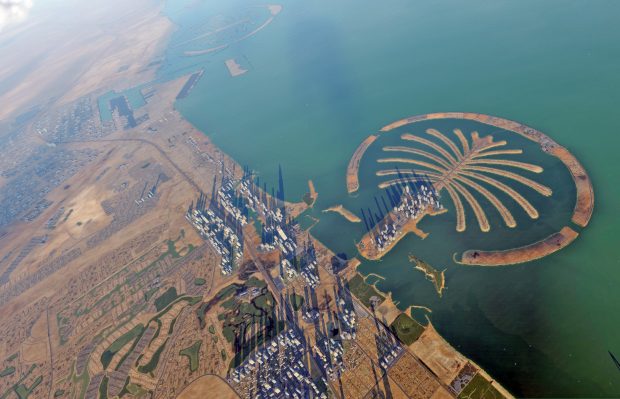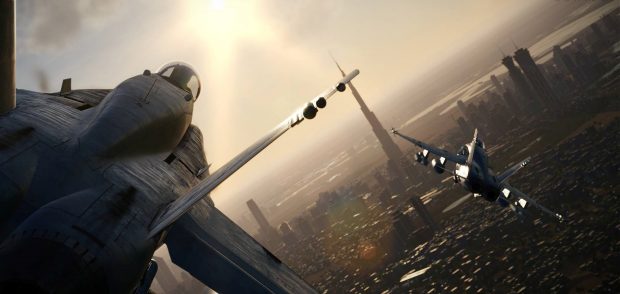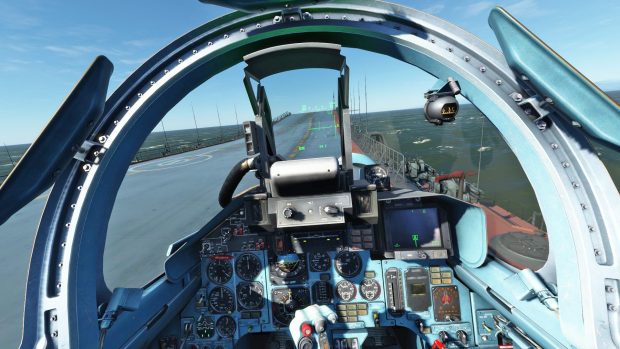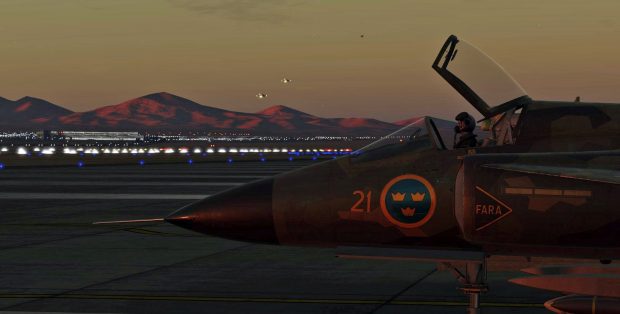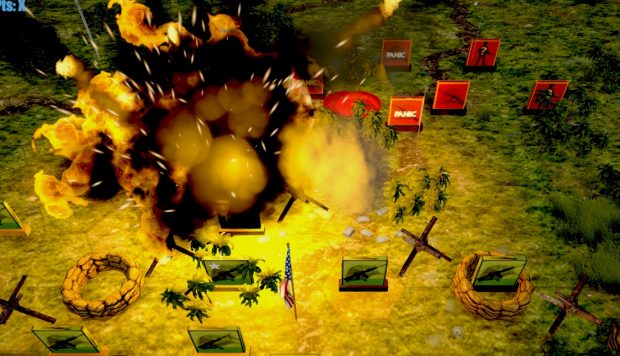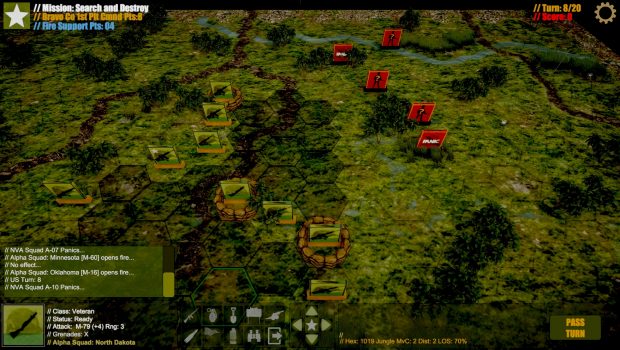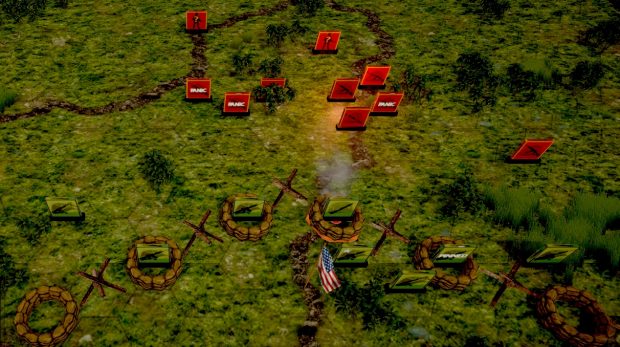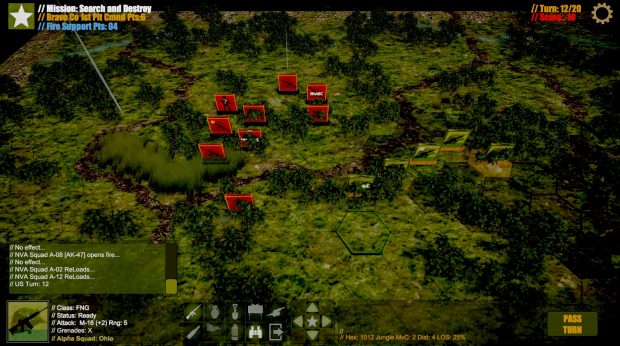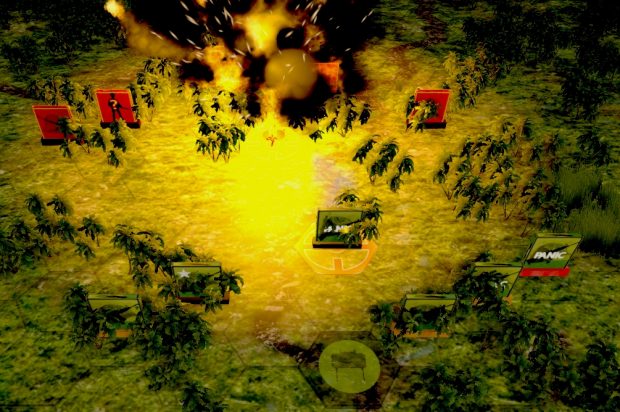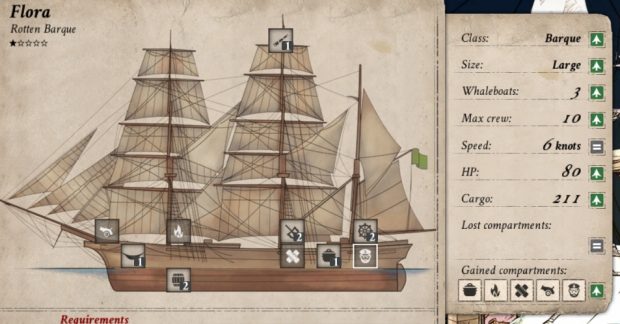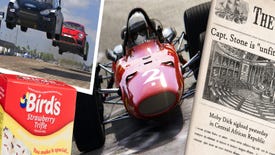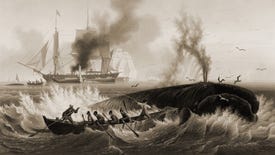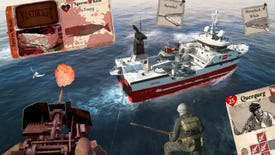The Flare Path: Jets, Jungle, and Jack Yards
DCS World, Combat Actions: Vietnam, Nantucket
DCS World, a combat flight sim made from a superhard composite of Truthite and RTFM, is a few days* away from an engine upgrade that will unify like a drill sergeant and spruce like a Scandinavian forest. Earlier this week I took a break from foliage-shredding in Combat Actions: Vietnam (Assessed below) and whale-worrying in Nantucket (Want to join my crew? Read on) to quiz producer Matt Wagner about the sea change that is '2.5'.
* “The 2.5 Open Beta will release on 31 January and the "stable" version a week later.”
RPS: For those who haven't been paying attention, what exactly is the 2.5 engine upgrade?
Matt: First and foremost, it's a single version that will run all DCS World maps and other modules (one version to rule them all). Since the release of version 2.0, that was required to support the Nevada and Normandy 1944 maps, we ran into our biggest problem: the division of DCS World maps between versions 1.x and 2.x. Not only was this a huge headache for us to support two development branches, it also made matters difficult for our third-party developers and of course customers (multiplayer in particular).
In order to bring all DCS World products back under a single roof, we first had to radically update the free Caucasus map to be compatible with the new graphics engine introduced with DCS World 2.x. That in itself has been a large undertaking because we also greatly increased the resolution of the elevation mesh and ground textures, updated all the buildings, added procedural grass, re-did all of the rivers with new rendering technology, greatly increased the amount of forest coverage using SpeedTrees technology, updated all of the airfield textures, added some new terrain to the southern portion of the map, and tuned the road and rail network.
In addition to the map updates, we also had to go back and update hundreds of missions and campaigns, given the changes in forests and road/rail network.
Another big new aspect of 2.5 is updated effects. This includes new explosion effects, updated clouds, AoA-based LEX/over-wing vapors, improved deferred lighting and shadows, and rain effects. We are also working on other new effects like rain on canopy, aircraft glinting, and further improvements to smoke and fire effects.
All of this of course must run well on non-super computers, so optimization and creating additional scaling graphics options has been very important.
RPS: Does 2.5 have tactical as well as aesthetic implications?
Matt: Certainly. For example: the new tree system for 2.5 includes trees that now have collision and can block line of sight for eyeballs and sensors. This makes helicopter missions much more fun and interesting to use tree lines for masking / cover.
Additionally, the greatly increased elevation mesh resolution makes it much easier for ground units to find hull-down positions. Speaking of which, the updated map details open up Combined Arms.
The new smoke system better creates battlefield conditions in which parts of the battlefield are obscured by smoke. In fact, we also have new smoke screens available in the mission editor.
The new lighting system makes unit spotting more realistic based on sun angle.
RPS: My system isn't in the first flush of youth. Should I be nervous about framerates?
Matt: We are shooting for 2.5 to be no more taxing than the current 2.x version that is currently available.
As technology and features march on, it is only natural that system requirements will need to rise to take advantage of all the new DX11 bells and whistles. However, we are also trying to be very careful to provide a wide array of graphics options settings to allow older machines to still play DCS World 2.5 at a good framerate.
For the past several months, we have also been working on Vulkan API integration into DCS World, which we expect to result in a substantial performance boost.
RPS: I confess I'm confused by the various DCS World DLC purchasing options. In a nutshell, what are the advantages and disadvantages of the two possible purchase routes (Steam and your own store)?
Matt: In a nutshell, the DCS World e-Shop version and the Steam version are the exact same minus the copy protection. Whereas our products on Steam (DLC) now use the standard Steam protection system, DCS products on our e-Shop (Modules) now use our new keyless protection system that simply binds the purchase to the user’s DCS World account (no more keys). Within 24 hours of a DCS World update appearing on the e-Shop, the same update is applied to the Steam version.
We do though first release new products on the e-Shop version before making them available on Steam. We prefer to first release on the e-Shop to make sure no game-breaking bugs sneaked into the release version before being released on Steam. For Early Access releases, we also prefer to have the products rather fleshed-out before releasing them on Steam. Because Steam does not permit DLC products to be released as Steam Early Access, we strive for more complete Steam releases. This is why you will often see a delay between the e-Shop and Steam releases. However, as was seen in the DCS: AV-8B Night Attack V/STOL, the time between releases was rather short.
RPS: Which of DCS World's aircraft would you recommend to an inexperienced or study-shy simmer?
Matt: I’d first certainly start with just the free DCS World version that includes the Caucasus map and two free aircraft (TF-51D Mustang and Su-25T attack jet). This allows new users to test their hardware against the software, get used to the user interface, test out the flight dynamics and controls systems, and even try some multiplayer.
After that, a good first buy would be DCS: Flaming Cliffs 3. As our gateway DCS World drug, it provides seven aircraft that include the F-15C Eagle, A-10A Warthog, MiG-29A Fulcrum, MiG-29S Fulcrum, Su-27 Flanker, Su-33 (aircraft carrier operations), and Su-25 Frogfoot. Most of these aircraft include professional flight models, but have more simplified controls for ease-of-use.
RPS: Is it possible to develop an aircraft like the Hornet without input from pilots who have flown the real McCoy?
Matt: It would certainly be possible, but you’d lose a lot of the little details that you’ll never find in all the documents in the world. It’s surprising the number of “life hacks” Hornet pilots use in the cockpit and the various procedures that are undocumented. Further, having their input on the flight characteristics and feeling of flight in the Hornet (particularly at edge of envelope flying) is indispensable.
While I’m sure we could make a good Hornet simulation without their input, having their assistance will allow us to make a great one I believe.
However, when it comes to tactics and weapon / sensor capability, we have a very strict fire-wall. All input from them is solely unclassified and non-sensitive. In fact, this is one of my most important tasks in this project.
RPS: DLC like the Hormuz map and the F/A-18C were announced several years ago and still aren't available. Why have they taken so long?
Matt: For the same reason as the updated Caucasus map: we needed to develop the tools to create a Strait of Hormuz (SoH) map that meets the quality goals we are aiming for. One item in game development that I see many folks outside this industry not appreciate is tool development. To create a new graphics engine, map, aircraft system, etc., a set of tools must first be created. This often proves to be a more complex and time-hungry task than actually creating the game content!
For the SoH map, we needed to create improved tools for 2.x to allow better elevation mesh and texture detail, allow creation of large cities like Dubai without a tremendous performance loss, and much improved blending of satellite textures with art-generated textures.
Another challenge has been the acquisition of high-resolution elevation mesh data and textures. While this is rather easy to find in some areas of the world like the USA and western Europe, the SoH region proved much more difficult.
As for the Hornet, several years have been required to first develop required technologies like a super-sonic flight model (the F-15C was used as the testbed) and an air-to-ground radar API. On top of that, it has taken years to amass the needed documentation and secure the Boeing license agreement. More recently, we decided we had enough information to simulate a much later version of the F/A-18C Hornet, and this required a rather large re-design and many assets had to be rebuilt. In the end though, we are sure it will result in a much better and more entertaining product.
RPS: Very few of the third-party developers involved in DCS World aircraft creation seem interested in map creation. Why not release a map editor and let the community have a go at cartography?
Matt: It’s been more a question of the maturity of the Terrain Creation Tools. We already have a couple 3rd party teams working on DCS World maps (like Ugra Media with the Normandy 1944 Map), and this will expand as the Terrain Creation Tools mature. We will be announcing other map products later in the year.
Creating a map though is a much more complex task than just draping a satellite texture over a mesh. It in fact requires professional-level art and engineering skills to create art-based terrain textures for noise maps and cleaning up textures, creation of all the many 3D objects that populate the map, creating complex GIS networks of roads, rail, rivers, powerlines, etc., and the engineering skills for setting up the map data structures.
As with our aircraft, having a high-quality standard for DCS World is very important to us.
RPS: Do you have any plans to introduce support for VR motion controllers?
Matt: This is something we have been experimenting with, but our initial findings show limited utility. For a simulation like DCS World, you really want be using a joystick and throttle to fly. Trying to control pitch, roll, and yaw with a VR hand controller would greatly limit the control fidelity needed for a simulation with realistic flight dynamics.
To have to bring your hands off the stick and throttle to grab hand controllers with VR goggles strapped to your face would also be very disruptive to the experience.
This is not to say we will not implement such control; in fact, we are actively working on this for those that want it.
RPS: MBot's dynamic campaigns for DCS World seem popular. Have they influenced ED's thinking at all?
Matt: While we certainly applaud his efforts, we have much bigger plans for DCS World on this front. We are pursuing much more ambitious plans that incorporate community, cause-and-effect continuity, strategic and tactical goals, player performance tracking and rewards, and accounting for time periods.
A bit too early to go into more detail, but this is very much a high priority for us moving forward post-2.5.
RPS: When was the last time you crashed a DCS aircraft?
Matt: Probably when recording this recent video:
I caught a wingtip on the river, a tree, or power line more times than I’d like to admit!
RPS: Thank you for your time.
* * *
Jeff Lapkoff ricochets through history like a time machine with a faulty flux capacitor. His eleven-title oeuvre spans a dozen centuries and limelights numerous unfashionable battles and conflicts. Spotting themes is tricky but as costly imperial adventures and Cold War politics crop up more than once, the setting of his latest creation probably shouldn't come as a complete surprise.
The $15 Combat Actions: Vietnam is an accessible, low-headcount hex wargame in which units are man-sized, targets are close, and 'missions' seldom last longer than fifteen minutes. I like the intimacy, pace, and price, and the way Jeff uses initiative to break up traditional IGOUGO turn rhythms, but feel the game injures itself with overly capricious combat and campaign indifference.
At present what you get is essentially a skirmish generator with seven mission templates (search and destroy, blocking force, evade and escape, US static defence, NVA static defence, helo down, and tunnel hunt) most of which allow force size, force experience and fire support customisation.
Because the results of one firefight have zero impact on the next and - oddly – it's possible to lose your entire squad or platoon and still, assuming you've culled sufficient communists, 'win' a mission, there's little encouragement to shepherd or disengage - no post-patrol surge of relief.
Introducing a campaign, however crude, without first adding a little extra determinism to combat routines would be fairly pointless. Right now lead and HE exchanges are exciting, but too unpredictable to be entirely exasperation-free. Although CAV's ranged fire calculations crunch a wealth of environmental, mechanical, and human factors, the dice rather than the modifiers often seem to hold the whip hand.
Too often for my taste, I lose static men in cover to distant AK-47 wielders advancing across open terrain, while those same AK-47 wielders survive multiple M16 and M60 bursts unscathed. The current balancing, together with highly stylised fire support mechanics (artillery and mortar barrages arrive instantaneously and are seldom more than a hex or two wide of their intended target) ensures engagements are short and savage. I just wish the rewards for sound squad tactics were a little more tangible.
To its credit CAV uses a clever, easily grasped initiative system to add turbulence to potentially stultifying turn rhythms. You 'buy' actions (move, fire, reload, throw grenade, rally attempt, etc) for your soldiers with the command points that the computer doles out during the course of your turn. While you always know the total number of CPs you're going to get in a particular turn, you're never certain when in the turn each CP will arrive. Bursts of friendly activity interleave with bursts of enemy activity. You're forced to prioritise.
The AI is interesting too. At times intimidatingly purposeful and aggressive, NVA/VC forces sometimes appear to be pausing... considering their options. Gain the upper hand in a search-and -destroy outing and it's not uncommon to glimpse Red remnants fleeing for the northern map edge.
All maps in CAV are composed of 576 hexagons and, disappointingly, come crisscrossed by identical stream and track networks (jungle hexes are randomised). If the latter limitation is a consequence of Jeff's recent shift to 3D game design, that extra D is a decidedly mixed blessing. Although I like the board-game style base-mounted chits used to represent combatants, the pyrotechnics, and the tiger that pads across the map at the start of every battle, I'd gladly forgo them in return for keyboard camera controls, and true random battlefields dotted with villages and paddy fields.
With rebalanced combat and an added campaign Combat Actions: Vietnam would, I'm sure, effortlessly outsell anything Jeff has yet produced. Without them I fear it will struggle to form long-term friendships. There's definitely room in the genre for a faster, less fiddly alternative to Squad Battles. CAV has the potential to become that alternative. Whether historical hobo Jeff has the necessary will or patience to engineer the metamorphosis is another matter.
* * *
I'm on the verge of purchasing my first Pequod-sized ship in Picaresque's picaresque whaling game Nantucket. The festering Flora requires a crew of ten and I wondered if any of you would be willing to sign on for an Infinite Horace II-style adventure?
Interested parties should apply via the comments, listing their preferred role (harpooner, sailor, carpenter, medic/zoologist, or cabin boy), hobbies, and any previous maritime experience. Fate and Yours Truly will do the rest. Assuming there are sufficient candidates, next week's Flare Path will carry an account of the Flora's travels and travails.
* * *
